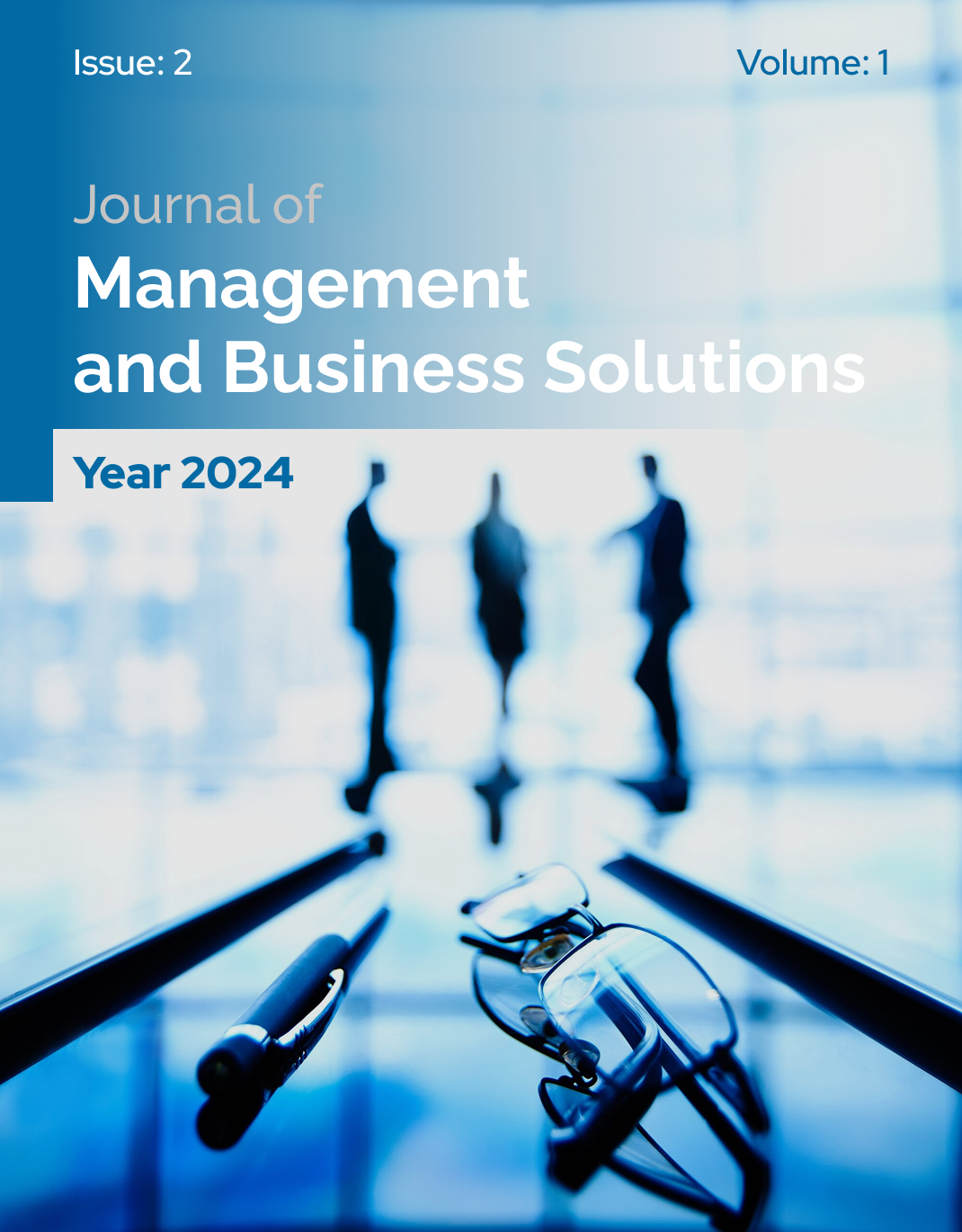Examining the Role of Digital Leadership in Fostering Organizational Agility in Fast-Paced Industries
Keywords:
Digital leadership, organizational agility, qualitative research, fast-paced industries, NVivo, strategic foresight, technological transformation, emerging marketsAbstract
This study aims to examine how digital leadership contributes to the development and enhancement of organizational agility in fast-paced industries, particularly within the context of emerging markets. This qualitative research employed a thematic analysis approach to explore the lived experiences and perceptions of digital leadership among 28 mid- to senior-level managers operating in fast-paced industries based in Tehran. Participants were selected through purposive sampling, ensuring representation from sectors experiencing rapid technological change such as finance, telecommunications, and IT services. Data were collected via semi-structured interviews until theoretical saturation was reached. Each interview was recorded, transcribed verbatim, and analyzed using NVivo software to identify recurring themes and patterns. The results revealed three core thematic categories: strategic vision and digital orientation, enabling people and processes, and organizational infrastructure and ecosystem. Within these categories, key leadership behaviors—such as future-oriented thinking, fostering a culture of experimentation, data-driven decision-making, decentralization, upskilling, and agile tool implementation—were found to significantly support organizational agility. Participants emphasized the importance of external collaborations, digital governance, and feedback loops as vital mechanisms through which digital leaders enhance adaptability and responsiveness in dynamic environments. Digital leadership is a multi-dimensional construct that plays a critical role in cultivating organizational agility by integrating strategic foresight, technological fluency, and people-centric processes. In fast-paced and resource-constrained environments, leaders who can mobilize digital tools while empowering teams are uniquely positioned to drive agile transformation. The study contributes context-specific insights to the broader discourse on digital transformation, offering theoretical and practical implications for leadership development and organizational design.
Downloads
References
Bharadwaj, A., El Sawy, O. A., Pavlou, P. A., & Venkatraman, N. (2013). Digital business strategy: Toward a next generation of insights. MIS Quarterly, 37(2), 471–482.
Doz, Y., & Kosonen, M. (2010). Embedding strategic agility: A leadership agenda for accelerating business model renewal. Long Range Planning, 43(2-3), 370–382.
El Sawy, O. A., Kræmmergaard, P., Amsinck, H., & Vinther, A. L. (2016). How LEGO built the foundations and enterprise capabilities for digital leadership. MIS Quarterly Executive, 15(2), 141–166.
Goran, J., LaBerge, L., & Srinivasan, R. (2017). Culture for a digital age. McKinsey Quarterly, July 2017.
Hess, T., Matt, C., Benlian, A., & Wiesböck, F. (2016). Options for formulating a digital transformation strategy. MIS Quarterly Executive, 15(2), 123–139.
Jafari-Sadeghi, V., Dutta, D. K., & Ferraris, A. (2020). Internationalisation business models in the context of digital transformation. Journal of Business Research, 113, 1–4.
Kane, G. C., Palmer, D., Phillips, A. N., & Kiron, D. (2015). Strategy, not technology, drives digital transformation. MIT Sloan Management Review, 14(1), 1–25.
Mihardjo, L. W. W., Sasmoko, S., & Alamsjah, F. (2019). Adaptive strategic leadership in digital business transformation: The role of organizational knowledge creation. International Journal of Engineering and Advanced Technology, 8(6), 2249–8958.
Overby, E., Bharadwaj, A., & Sambamurthy, V. (2006). Enterprise agility and the enabling role of information technology. European Journal of Information Systems, 15(2), 120–131.
Rigby, D. K., Sutherland, J., & Noble, A. (2020). Agile at scale: How to go from a few teams to hundreds. Harvard Business Review, 98(3), 88–96.
Tallon, P. P., Queiroz, M., Coltman, T., & Sharma, R. (2019). Information technology and the search for organizational agility: A systematic review with future research possibilities. The Journal of Strategic Information Systems, 28(2), 218–237.
Teece, D. J., Peteraf, M., & Leih, S. (2016). Dynamic capabilities and organizational agility: Risk, uncertainty, and strategy in the innovation economy. California Management Review, 58(4), 13–35.
Verhoef, P. C., Broekhuizen, T., Bart, Y., Bhattacharya, A., Dong, J. Q., Fabian, N., & Haenlein, M. (2021). Digital transformation: A multidisciplinary reflection and research agenda. Journal of Business Research, 122, 889–901.
Yoo, Y., Boland, R. J., Lyytinen, K., & Majchrzak, A. (2012). Organizing for innovation in the digitized world. Organization Science, 23(5), 1398–1408.
Zeike, S., Bradbury, K., Lindert, L., & Pfaff, H. (2019). Digital leadership skills and associations with psychological well-being. International Journal of Environmental Research and Public Health, 16(14), 2628.
Downloads
Published
Submitted
Revised
Accepted
Issue
Section
License

This work is licensed under a Creative Commons Attribution-NonCommercial 4.0 International License.




